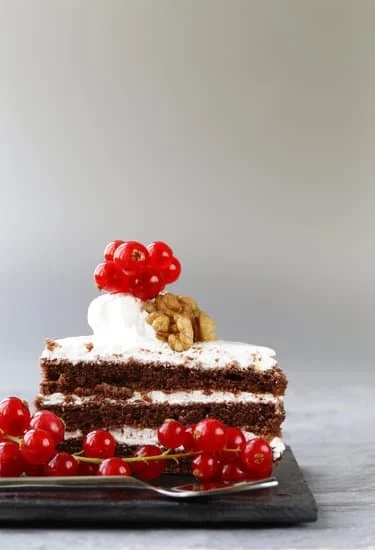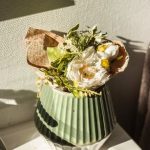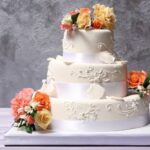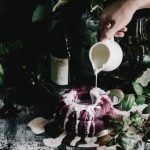When it comes to cake decorating, the right icing can make all the difference in creating a masterpiece. Whether you’re a beginner or a seasoned baker, knowing how to make good icing for cake decorating is essential for achieving professional-looking results.
In this article, we will explore the various types of icing commonly used in cake decoration, including buttercream, royal icing, fondant, and ganache. We’ll also delve into the factors to consider when choosing the perfect icing for your cakes, such as taste, texture, and design.
Each type of icing brings its own unique qualities to the table, allowing for endless creativity and possibilities in cake decorating. From classic buttercream for its creamy texture and easy piping capabilities to elegant royal icing for intricate designs and fondant for a smooth finish, understanding the characteristics of each is key to selecting the right one for your project.
Additionally, we will provide insight into the essential tools and ingredients needed to create your own delicious and visually appealing icing at home.
Whether you’re looking to whip up a simple yet delicious buttercream or venture into more advanced techniques like working with fondant or ganache, this article will guide you through a step-by-step process on how to make different types of icing. With helpful tips on achieving the perfect consistency and color of your icing as well as creative ways to decorate cakes using various techniques, you’ll be on your way to cake decorating success in no time.
Different Types of Icing for Cake Decorating
When it comes to cake decorating, choosing the right type of icing is crucial to achieving the desired look and taste for your masterpiece. There are several different types of icing that are commonly used in cake decorating, each with its own unique properties and techniques. Understanding the differences between buttercream, royal icing, fondant, and ganache can help you decide which one is best suited for your specific project.
Here are the main types of icing used in cake decorating:
- Buttercream: This classic icing is made from butter, powdered sugar, and flavorings. It is smooth, creamy, and easy to work with, making it a popular choice for both frosting and piping decorations.
- Royal Icing: Made from confectioners’ sugar and egg whites, royal icing dries hard and creates a smooth finish. It is commonly used for intricate details like lacework or delicate flowers.
- Fondant: A pliable sugar paste that can be rolled out into sheets to cover cakes or molded into shapes for decorations. Fondant gives cakes a sleek, professional look but can be more challenging to work with than other types of icing.
- Ganache: A luxurious mixture of chocolate and cream that creates a rich, glossy coating when poured over cakes. Ganache is excellent for drip cakes or as a filling between layers.
Each type of icing has its own strengths and weaknesses in terms of taste, texture, and appearance. Consider the design of your cake, the flavors you want to incorporate, and your skill level when choosing the right icing for your project. Experimenting with different types of icings can help you discover which one works best for your creative vision.
Whether you’re a beginner or an experienced baker, mastering the art of making good icing for cake decorating is essential. By understanding the characteristics of each type of icing and practicing various techniques, you can enhance your skills and create stunning cakes that delight both the eyes and taste buds. With dedication and a bit of creativity, you’ll soon be on your way to becoming a cake decorating pro.
Choosing the Right Icing for Your Cake
When it comes to cake decorating, choosing the right icing is essential in achieving the desired look and taste for your creation. There are several types of icing commonly used in cake decorating, each with its own unique properties and characteristics. Understanding these differences will help you choose the best icing for your specific cake design. Here are some factors to consider when selecting the perfect icing for your cake:
- Taste: The flavor of the icing should complement the flavors of the cake. For example, a rich chocolate cake may pair well with a creamy ganache icing, while a light vanilla cake could be enhanced by a fluffy buttercream.
- Texture: The texture of the icing should be appropriate for the style of decoration you have in mind. Buttercream is versatile and can be piped into intricate designs or spread smoothly over a cake, while fondant provides a smooth, sleek finish ideal for sculpting intricate details.
- Design: Consider the overall design aesthetic you want to achieve with your cake. Royal icing is perfect for creating delicate lace designs or intricate piping work, while fondant can be molded into 3D shapes and figures for more elaborate decorations.
Understanding how these factors align with your preferences and vision for your cake will guide you in selecting the best icing for your decorating needs. Experimenting with different types of icing and techniques will not only enhance your baking skills but also allow you to discover new ways to express your creativity through cake decoration.
Remember that practice makes perfect when it comes to working with different types of icing for cake decorating. Don’t be afraid to try out new recipes and experiment with various techniques to find what works best for your individual style. With patience and persistence, you’ll soon master the art of creating beautifully decorated cakes that not only look stunning but taste delicious too.
Essential Tools and Ingredients Needed for Making Icing for Cake Decorating
When it comes to cake decorating, having the right tools and ingredients for making icing is essential for achieving beautifully decorated cakes. Whether you are a beginner or an experienced baker, having the proper equipment and supplies can make a significant difference in the outcome of your cakes. Here is a closer look at some of the essential tools and ingredients needed for making icing for cake decorating:
Tools
One of the most important tools for making icing for cake decorating is an electric mixer, such as a stand mixer or hand mixer. This will help you achieve a smooth and fluffy consistency when making buttercream or royal icing. Piping bags and tips are also essential for creating intricate designs and patterns on cakes. A good offset spatula is useful for spreading icing evenly on cakes and smoothing out any imperfections.
Ingredients
The ingredients used to make icing will vary depending on the type of icing you are making. Common ingredients include powdered sugar (also known as confectioners’ sugar), unsalted butter, vanilla extract, heavy cream or milk, and food coloring or flavoring extracts. If you are making royal icing, you will need egg whites or meringue powder in addition to powdered sugar. For fondant, gelatin, glucose syrup, glycerin, and water are typically used.
Cake Decorating Kit
In addition to basic tools and ingredients, having a cake decorating kit with various molds, cutters, stencils, and embossers can help enhance your creativity when decorating cakes. These kits often include different shapes and sizes of tips for piping intricate designs as well. Investing in quality tools and ingredients can elevate your cake decorating skills and allow you to create professional-looking cakes at home.
By having the right tools and ingredients on hand, you can confidently create beautiful cakes with delicious icing that will impress your friends and family. Experimenting with different techniques and recipes will help improve your skills as a cake decorator over time.
Step-by-Step Guide on How to Make Buttercream Icing for Cake Decorating
One of the most essential elements in cake decorating is getting the right icing. Buttercream icing is a popular choice due to its creamy texture, versatility, and delicious taste. Learning how to make good icing for cake decorating can elevate your creations and wow your guests. Here is a step-by-step guide on how to make buttercream icing that is perfect for decorating your cakes.
To make buttercream icing, you will need the following ingredients: butter, powdered sugar, vanilla extract, and heavy cream or milk. Start by creaming room temperature butter until it becomes smooth and fluffy. Gradually add in sifted powdered sugar and continue mixing until well combined. Add vanilla extract for flavor and a small amount of heavy cream or milk to achieve the desired consistency.
Once all the ingredients are mixed together, beat the buttercream icing on medium-high speed for a few minutes until it is light and airy. This will ensure that your icing is smooth and easy to work with when decorating your cake.
If you want to add color to your buttercream, use gel food coloring as it provides vibrant hues without affecting the consistency of the icing. Practice piping different designs on parchment paper before applying them to your cake for best results.
| Ingredients | Instructions |
|---|---|
| Butter | Cream room temperature butter until smooth |
| Powdered sugar | Add sifted powdered sugar gradually |
| Vanilla extract | Mix in vanilla extract for flavor |
By following these steps on how to make buttercream icing for cake decorating, you can create beautiful cakes with intricate designs and impressive decorations. Experiment with different flavors by adding extracts or fruit purees to customize your buttercream to suit different types of cakes. Whether you’re a beginner or an experienced baker, mastering the art of making good icing will take your cake decorating skills to the next level and leave everyone impressed with your stunning creations.
Remember that practice makes perfect when it comes to working with icing for cake decorating. Don’t be afraid to try new techniques, colors, and designs to enhance your skills and creativity. With patience and determination, you’ll soon be able to decorate cakes like a professional baker using this delicious homemade buttercream icing recipe.
Tips and Tricks for Achieving the Perfect Consistency and Color of Icing
When it comes to cake decorating, having the perfect consistency and color of icing can make a world of difference in the final outcome of your creation. Achieving the right balance between texture and shade is crucial for a successful cake decoration. So, how to make good icing for cake decorating that is not only visually appealing but also delicious? Let’s delve into some tips and tricks that can help you master the art of creating the perfect icing.
One key factor in achieving the ideal consistency of icing is making sure to follow your recipe diligently. The ratio of ingredients, especially butter or shortening to sugar, plays a significant role in determining whether your icing will be too thick or too runny.
Adding milk or cream gradually while mixing can also help you reach the desired thickness without going overboard. For those who prefer a stiffer consistency, adding more sugar can help maintain shape and structure when piping intricate designs.
Coloring your icing can be just as important as getting its consistency right. Gel food coloring is often preferred over liquid dyes because it doesn’t alter the texture of the icing as much and provides more vibrant hues. Start with small amounts of coloring and gradually add more until you reach your desired shade.
Remember that colors tend to deepen over time, so let your icing sit for a few minutes before making any adjustments. Additionally, using a color wheel can be helpful in mixing different shades to achieve unique tones for your cake decorations.
Experimenting with different techniques such as marbling or ombré effects can elevate your cake decorating skills to the next level. To create a marbled effect, simply drip small amounts of different colored icings onto your base icing and gently swirl them together with a toothpick or knife for a stunning visual impact.
Ombré effects involve blending different shades of one color from light to dark, either vertically or horizontally across your cake layers for a gradient effect. By mastering these techniques along with nailing the consistency and color of your icing, you’ll be well on your way to creating show-stopping cakes that will impress everyone at any celebration.
| Key Tips | Key Tricks |
|---|---|
| Follow recipe ratios diligently | Use gel food coloring for vibrant hues |
| Add liquid cautiously for desired thickness | Let colored icing stand before adjusting shades |
| Experiment with marbling and ombré effects | Refer to color wheel for customizing hues |
Creative Ways to Decorate Cakes Using Different Types of Icing Techniques
Using Buttercream Icing
One creative way to decorate cakes using buttercream icing is to utilize piping techniques. By using various piping tips, decorators can create intricate designs such as flowers, swirls, and ruffles. Another fun idea is to try the ombre effect by blending different shades of buttercream to create a gradient look on the cake. Additionally, using a spatula or palette knife, decorators can achieve a rustic or textured finish for a more casual and artistic appearance.
Exploring Royal Icing Techniques
Royal icing is known for its ability to harden when dried, making it ideal for intricate details like lacework and delicate decorations. One popular technique is called “flooding,” where royal icing is used to fill in larger areas of the cake with a smooth finish.
Decorators can also use royal icing to create 3D decorations like flowers or figures that can stand on top of the cake. Furthermore, experimenting with stencils and edible paints can add another layer of creativity when working with royal icing.
Fondant Design Ideas
Fondant provides a smooth and clean canvas for decorating cakes and opens up a wide range of design possibilities. One way to elevate fondant decorations is by using molds or cutters to create intricate shapes or patterns. Decorators can also incorporate textures like quilting or pleats by manipulating the fondant surface.
Another popular technique is creating fondant figurines or models that can add a personal touch to any cake design. Don’t forget about airbrushing techniques with edible colors to add depth and dimension to fondant-covered cakes.
With these creative ideas in mind, decorators can explore endless possibilities when it comes to decorating cakes using different types of icing techniques. Whether it’s buttercream, royal icing, fondant, or ganache, each type offers unique opportunities for expressing creativity and skill in cake decorating. Experimenting with various techniques and designs will help develop your skills as you master the art of creating beautifully decorated cakes for any occasion.
Troubleshooting Common Issues When Working With Icing for Cake Decorating
When it comes to cake decorating, working with icing can sometimes present challenges that may affect the overall look and taste of your creation. Understanding how to troubleshoot common issues when working with icing is essential to ensure that your cakes turn out perfectly every time.
One common issue when working with icing for cake decorating is achieving the right consistency. If your icing is too thick, it can be difficult to spread smoothly on the cake and may result in a messy finish.
On the other hand, if the icing is too thin, it may not hold its shape when piping designs or decorations. To adjust the consistency of your icing, you can add more powdered sugar to thicken it or a small amount of liquid (such as milk or water) to thin it out.
Another frequent challenge is air bubbles in the icing, which can cause unsightly holes or pockets in your decorations. To prevent air bubbles from forming, make sure to mix your icing slowly and avoid overmixing. If air bubbles do appear in your icing, gently tap the bowl on a flat surface and use a toothpick to carefully release them before decorating your cake.
Color consistency is also crucial when working with icing for cake decorating. If your colored icings do not match or have streaks of different shades, it can detract from the overall presentation of your cake.
To achieve uniform color throughout your icing, start by using gel food coloring instead of liquid for more vibrant results. Additionally, make sure to mix the color into small batches of icing separately before combining them for consistent coloring across all parts of your decoration project.
By addressing these common issues and following these troubleshooting tips, you can overcome obstacles that may arise when working with icing for cake decorating. Remember that practice makes perfect, so don’t be discouraged if you face challenges along the way. With patience and determination, you’ll soon master the art of creating beautiful cakes with flawless icing decorations that will impress everyone who sees (and tastes) them.
Conclusion
In conclusion, mastering the art of cake decorating begins with understanding the importance of choosing the right icing. Whether you opt for buttercream, royal icing, fondant, or ganache, each type brings its own unique flavor and texture to your creations. The decision on which icing to use should be based on factors such as taste preferences, desired design, and overall look of the finished cake.
To achieve success in cake decorating, it is essential to have the right tools and ingredients at hand. From piping bags and tips to food coloring gels and flavor extracts, having a well-equipped kitchen will make the icing-making process much smoother. Following a step-by-step guide on how to make buttercream icing can serve as a solid foundation for beginners looking to hone their skills in cake decorating.
Remember, practice makes perfect when it comes to working with different types of icing for cake decorating. Experimenting with various recipes and techniques will not only allow you to discover what works best for you but also unleash your creativity in creating stunning designs. So go ahead and enjoy the journey of learning how to make good icing for cake decorating – your cakes will thank you for it.
Frequently Asked Questions
What Icing Is Best for Cake Decorating?
The best icing for cake decorating is usually royal icing or buttercream frosting. Royal icing dries hard, making it ideal for intricate designs and decorations. Buttercream, on the other hand, is smooth and creamy, perfect for covering cakes with a simple finish.
What Frosting Do Professionals Use?
Professionals often use Swiss meringue buttercream or Italian meringue buttercream for cake frosting. These types of frostings are light, airy, and have a silky texture that is perfect for creating beautiful decorations on cakes. They also hold their shape well in warm environments.
How Do You Make Smooth Icing for Cake Decorating?
To achieve a smooth icing surface for cake decorating, it’s important to start with the right consistency of the icing. Make sure your buttercream or royal icing is not too thick or too thin.
Using an offset spatula or bench scraper, apply a thin layer of icing to the cake and then chill it before adding another layer for a smoother finish. Repeat this process until you achieve the desired smoothness on your cake.

Welcome to our cake decorating blog! My name is Destiny Flores, and I am the proud owner of a cake decorating business named Cake Karma. Our mission is to provide delicious, beautiful cakes for all occasions. We specialize in creating custom cakes that are tailored specifically to each customer’s individual needs and tastes.





